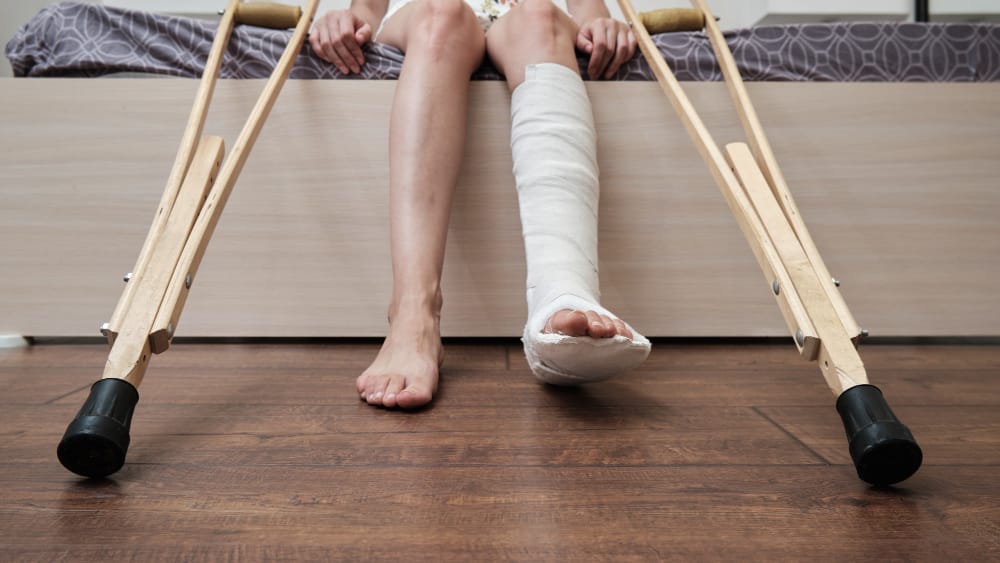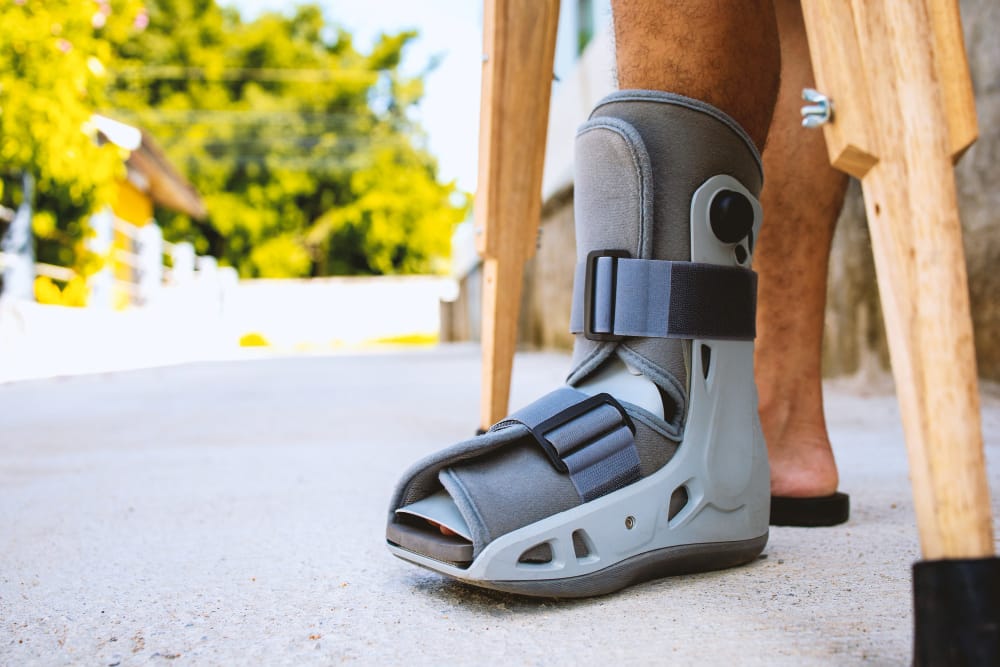One of the advantages of wearing a walking boot instead of a cast is that you can adjust and remove it, making your recovery more manageable and less restricting in doing your basic daily needs, but not in all cases you can choose a walking boot over a cast. If your doctor advised you to keep it on or if removing it is not possible while you take a shower, it is best to keep it as dry as possible and make yourself steady by getting a chair to sit down and placing your foot on another chair to make sure that it stays dry.
First of all, before stepping into the bathroom to take a shower with the condition of your ankle or feet, please get in touch with your doctor and let them know what you are about to do so that they can give you useful advice to be safe and to avoid possible accidents which could worsen your injury.
Difference of a cast and walking boot

Orthopedic casts
Referred to as a “cast” are hard shells made of plaster or fiberglass that are wrapped around a broken bone during treatment. Plaster and fiberglass are used because when the materials harden, the cast is highly durable and rigid.
The rigid structure of the cast immobilizes and stabilizes the broken bone so that it can properly heal.
Walking boot
They are sometimes referred to as an orthopedic boot, CAM boot, or below-knee walking boot. It’s a specially designed medical shoe made of lightweight yet sturdy material.
The design of the walking boot is similar to a big, bulky shoe but with a few noticeable differences.
Some of the differences include the use of adjustable straps that allow for a customized fit, varying lengths in height, and the toes aren’t covered.
How to take care of your walking boot at home
- Follow your doctor’s instructions about how much weight you can put on your foot, adjusting the fit of the boot, and when you can go back to your usual activities. If you were given crutches, use them as directed.
- If your toes on the leg with the boot were not injured, move them now and then. This helps with blood circulation and fluids in the injured leg.
- Prop up the injured leg on a pillow when you ice it or anytime you sit or lie down during the next few days. Try to keep it above the level of your heart. This will help reduce swelling. If your doctor told you how and when to use ice, follow your doctor’s instructions. If you did not get instructions, follow this general advice:
- Be careful not to get the boot wet. Ask your doctor if you can take the boot off when you use ice.
- Put a thin cloth between the ice and your skin, put ice or cold packs on the leg for 10 to 20 minutes at a time. Try to do this every 1 to 2 hours for the next 3 days or until the swelling goes down.
- If you were instructed by your doctor not to remove your boot, try blowing cool air from a hairdryer or fan into the boot to help relieve itching. Never stick items under your boot to scratch the skin. Do not put oils or lotions near your boot. If the skin gets red or sore around the edge of the boot, you may pad the edges with a soft material, such as moleskin. Or you can use tape to cover the edges.
- If you’re allowed to remove your boot, be sure your skin is dry before you put the boot back on. Be careful not to put the boot on too tightly. Check the skin under the boot every day. If you have diabetes, your doctor may ask you to check your skin several times per day. If you are not supposed to remove the boot, check the skin around the edges. Tell your doctor if you see redness or sores.
Keeping your boot dry
- Keep your boot dry, moisture can collect under the boot and cause skin irritation and itching. If you have a wound or have had surgery, moisture under the boot can increase the risk of infection. Even with excellent protection, there’s always a risk of water seeping through onto your boot. Strive to keep your boot away from water entirely in the aftermath of an injury.
- If your doctor says to keep your boot on to shower, protect it so that it won’t get wet. Put your leg inside a waterproof cast cover or plastic trash bag and tape the top with a cloth around your leg.
- Try sponge baths instead of showers, in addition to risking getting your boot wet, navigating a shower can be difficult in the aftermath of an injury. This may be especially tricky if you have a broken leg. If possible, opt for sponge baths instead of showers.
- Use a detachable shower hose to clean yourself. This will give you a lot more control when showering seated. You can help direct the water on the body parts you want and keep it away from your boot.
- If you can take the boot off when you shower, pat the area dry after you shower. Then put the boot back on. If your boot gets a little wet, you can dry it with a hairdryer. Use the cool air setting.
FAQs
What do I do if my walking boot gets wet?
Call your doctor before doing anything else. If your doctor instructed you to dry your walking boot, allow it to air dry completely before placing back in the frame.
Please do not place the liner in the washing machine or dryer as it may damage the inner air bladders. The frame of the boot may be cleaned with a damp cloth.
Ensure both liner and frame are dry before putting it back on. Use a hairdryer to dry a boot.
Should I wear my walking boot to bed?
While each case is different, in most cases, you do not have to wear your walking boot while you are sleeping. Usually, you can take the boot off once you get in bed for the night.
You do have to put the boot back on before you put your feet down in the morning. If your doctor allows you to remove it while sleeping, it should be fine.
Conclusion
Healing takes time, and it could be frustrating not being able to do simple daily tasks as easy as they should be, but your safety is the top priority, and if that means 1 hour of uncomfortable bath time, then so be it.
A complication with your injury is the last thing you need at this point in your recovery. The more careful you are, the faster you heal and get back to your everyday movements. You can do this!


